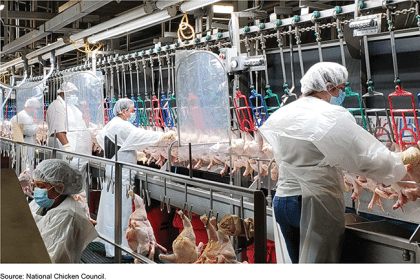Agency Sets Rules Limiting Miners’ Exposure to Hazardous Silica Dust

WASHINGTON — The Mine Safety and Health Administration issued a new rule on Tuesday aimed at better protecting the nation’s miners from health hazards associated with exposure to respirable crystalline silica, also known as silica dust.
Inhaling crystalline silica, a known carcinogen, can cause serious lung and other diseases, such as silicosis, lung cancer, progressive massive fibrosis, chronic bronchitis and kidney disease.
In addition, exposure to mixed coal mine dust containing respirable crystalline silica can lead to the development of black lung disease and progressive massive fibrosis, both of which are irreversible and can be fatal.
The new rule lowers the permissible exposure limit of respirable crystalline silica to 50 micrograms per cubic meter of air for a full-shift exposure, calculated as an eight-hour time-weighted average.
If a miner’s exposure exceeds the limit, the final rule requires mine operators to take immediate corrective actions to come into compliance.
The rule also requires metal and nonmetal mine operators to establish medical surveillance programs to provide periodic health examinations at no cost to miners.
The exams are similar to the medical surveillance programs available to coal miners under existing standards.
Finally, it replaces an outdated standard for respiratory protection with a new standard reflecting the latest advances in respiratory protection and practices.
Agency officials believe implementation of the new rules will result in an estimated total of 1,067 lifetime avoided deaths and 3,746 lifetime avoided cases of silica-related illnesses.
“This rule reducing miners’ exposures to toxic silica dust has been a long time in the making, and the nation’s miners deserve its health protections,” said assistant secretary for Mine Safety and Health Chris Williamson in a written statement.
“MSHA is committed to working together with everyone in the mining community to implement this rule successfully. No miner should ever have to sacrifice their health or lungs to provide for their family,” Williamson added.
“It is unconscionable that our nation’s miners have worked without adequate protection from silica dust despite it being a known health hazard for decades,” said Acting Labor Secretary Julie Su in a written statement.
“Today, the Department of Labor has taken an important action to finally reduce miners’ exposure to toxic silica dust and protect them from suffering from preventable diseases,” she said.
Also commenting, in a joint statement, were Senators from mining states. They included Sens. Joe Manchin, D-W.Va., Sherrod Brown, D-Ohio, Bob Casey, D-Pa., John Fetterman, D-Pa., Mark Warner, D-Va., and Tim Kaine, D-Va.
“This rule will play an essential role in safeguarding miners from cancers, silicosis and black lung disease, especially in Appalachia where black lung cases have been rapidly increasing in recent years,” they said.
“For generations, our brave coal miners have risked their lives to power our nation to greatness, and we will continue working together in the Senate to advance commonsense rules like this one to protect the health and welfare of these heroes,” they continued.
Cecil E. Roberts, international president of the United Mine Workers of America, said on Tuesday that the recent resurgence of diseases associated with exposure to silica dust, especially among younger miners in their 30s and 40s, underscores the urgency of this issue.
“This measure is vital for safeguarding miners’ well-being not only in the short term but throughout their careers. The UMWA’s focus now shifts to ensuring mining companies are held accountable,” Roberts said.
Dan can be reached at [email protected] and at https://twitter.com/DanMcCue


























